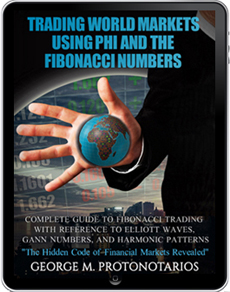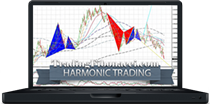 Trading Triangles and the Breakout Strategy
Trading Triangles and the Breakout Strategy
A triangle is an important formation, as it reflects changes in price volatility. Triangle patterns can offer high-momentum trading opportunities with limited downside risk.
What is a Triangle in Technical Analysis?
A triangle is a widely recognized chart pattern in technical analysis, formed by two converging trendlines that connect a series of progressively lower highs and higher lows (or vice versa), creating a triangle-like shape. This pattern typically reflects a phase of market consolidation or indecision before the price breaks out—either continuing the existing trend or initiating a new one.
A triangle pattern indicates a period of declining volatility as the price consolidates within the triangle. Once the formation is broken—either upward or downward—volatility and momentum surge.
Triangles Formation
Triangles are distinctive patterns. At the beginning of the formation, the triangle appears at its widest point. It then moves sideways, gradually narrowing its price range. Eventually, when the price breaks above or below the triangle, strong momentum is triggered.
Key Features
1. Converging Trendlines
-
Upper Trendline: Drawn by connecting a series of descending highs.
-
Lower Trendline: Drawn by connecting a series of ascending lows.
These trendlines gradually converge toward a point known as the apex, as price action tightens within the narrowing range.
2. Market Consolidation
Triangles often form after a strong price movement and indicate a pause in momentum. During this time, neither buyers nor sellers are in control, resulting in sideways movement as the market decides its next direction.
3. Declining Volume
As the triangle develops, trading volume typically diminishes. This reflects a reduction in trading activity and conviction, which is characteristic of the consolidation phase.
4. Breakout Confirmation
A triangle pattern is validated when the price breaks out and closes beyond one of the trendlines—typically accompanied by a surge in volume. This breakout marks the end of indecision and signals a potential strong move in the direction of the breakout.
5. Directional Bias
The anticipated direction of the breakout depends on the specific type of triangle pattern, which could be symmetrical, ascending, or descending.
Three (3) Types of Triangle Formations
First, let’s identify the three (3) main categories of triangles. Triangles can appear either as continuation patterns or as reversal patterns and there are three types of triangle formations:
- Ascending Triangles
- Descending Triangles
- Symmetrical Triangles
(1) Ascending triangles
 ■ Pattern Type: Bullish Continuation or Reversal Pattern
■ Pattern Type: Bullish Continuation or Reversal Pattern
■ Formation Type: Upward Slope Triangle
■ Trading Goal: Trading the Upside after the Breakout
Ascending triangles occur when the price reaches a resistance level and then moves sideways while maintaining a pattern of higher lows.
Here is how we can distinguish between bullish continuation and reversal patterns in ascending triangles:
(i) If an ascending triangle forms during an uptrend, it is considered an uptrend continuation pattern.
(ii) If an ascending triangle forms during a downtrend, it is viewed as a bullish reversal pattern.
Ascending triangles can develop ahead of significant news releases or economic data. During such periods, the market often shows uncertainty about its direction, leading to steadily decreasing volatility and the formation of a sideways pattern.
Typically, ascending triangles are followed by upward breakouts, which is why they are considered bullish patterns. These breakouts often occur near the end of the triangle—approximately three-quarters of the distance from the beginning of the formation to the lowest point of the volatility range.
False Breakouts
Occasionally, though not frequently, ascending triangles break out downward. This can happen when the resistance level is too strong and there isn’t enough buying pressure to push the price higher. In such cases, the trade may be stopped out. Ascending triangles used as continuation patterns tend to be more reliable than when they appear as reversal patterns.

(2) Descending Triangles
■ Pattern Type: Bearish Continuation or Bearish Reversal Pattern
■ Formation Type: Downward Slope Triangle
■ Trading Goal: Trading the Downside after the Breakout
Descending triangles occur when the price has reached a support level and then it moves sideways keeping a slope of lower highs.
A descending triangle, in general, is the exact opposite of an ascending triangle. As ascending triangles are seen as bullish formations, descending triangles are seen as bearish formations.
False Breakouts
Sometimes, descending triangles can break out from above. This is happening if the support level is strong, and there is not enough supply to push the price through it. If a descending triangle is formed during a downtrend, then it is a more secure formation.
 (3) Symmetrical Triangles
(3) Symmetrical Triangles
■ Pattern Type: Bullish / Bearish Pattern
■ Formation Type: Neutral Slope Triangle
■ Trading Goal: Trading the Upside or Downside after the Breakout

Symmetrical triangles occur when the price moves between strong support and resistance levels, forming a pattern of lower highs and higher lows.
These triangles are created by two converging trendlines that contain a sequence of lower highs and higher lows. Unlike ascending or descending triangles, symmetrical triangles do not have any horizontal lines.
The direction of the breakout cannot be predicted until the price crosses one of the two trendlines.
Important Tips when Applying the Triangle Breakout Strategy
The Triangle Breakout Strategy seeks to capitalize on the shift from low volatility to high volatility. Here are some important tips when implementing the breakout trading strategy:
(1) Check the news calendar and avoid trading during major news releases.
(2) Triangle formations are more reliable when identified on daily or weekly charts. The shorter the timeframe, the higher the likelihood of a false breakout.
(3) Prefer trading ascending triangles that form within strong bullish trends.
(4) Prefer trading descending triangles that form within strong bearish trends.
(5) Confirm the strength of the breakout by ignoring the initial breakout attempt.
(6) Look for at least one closing price above or below the breakout level on the 1-hour or 4-hour chart. Ideally, use the 1-day chart for confirmation.
(7) Make sure each side of the triangle has been touched at least twice.
(8) Confirm reduced volatility using technical tools such as Bollinger Bands, ATR, or Moving Averages.
(9) Ensure that after the breakout, the price has moved at least 10 pips beyond the support or resistance level.
(10) Place a stop-loss at least 10 pips beyond the opposite side of the triangle.
■ Triangle Breakout Strategy
TradingFibonacci.com
▶️ FIND OUT MORE AT TRADINGFIBONACCI.COM











